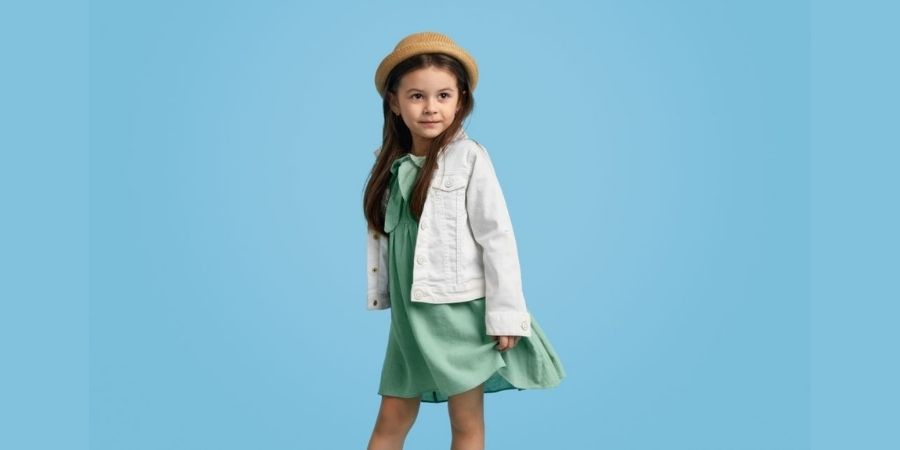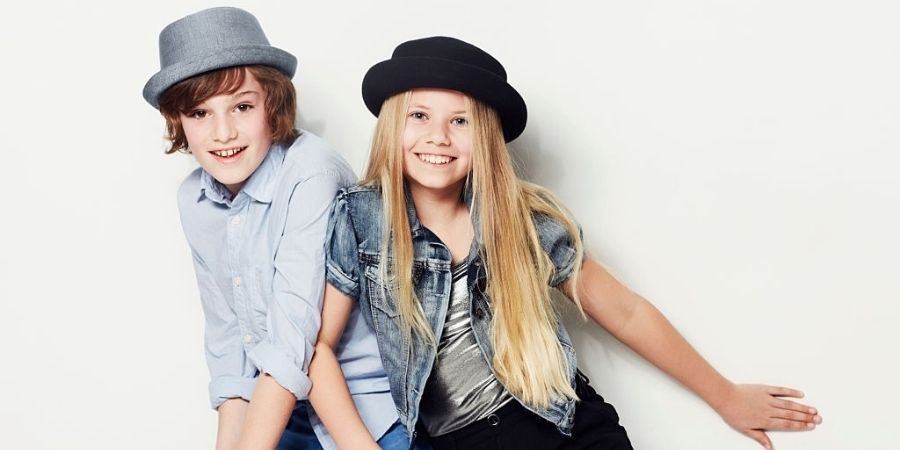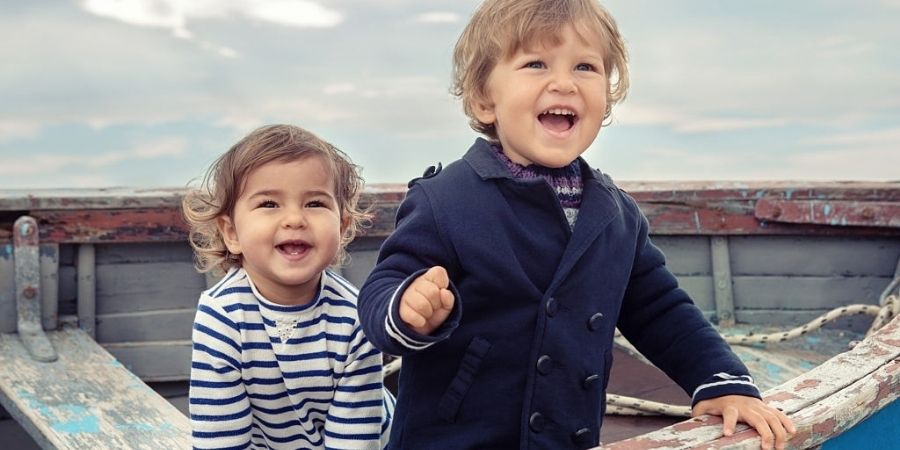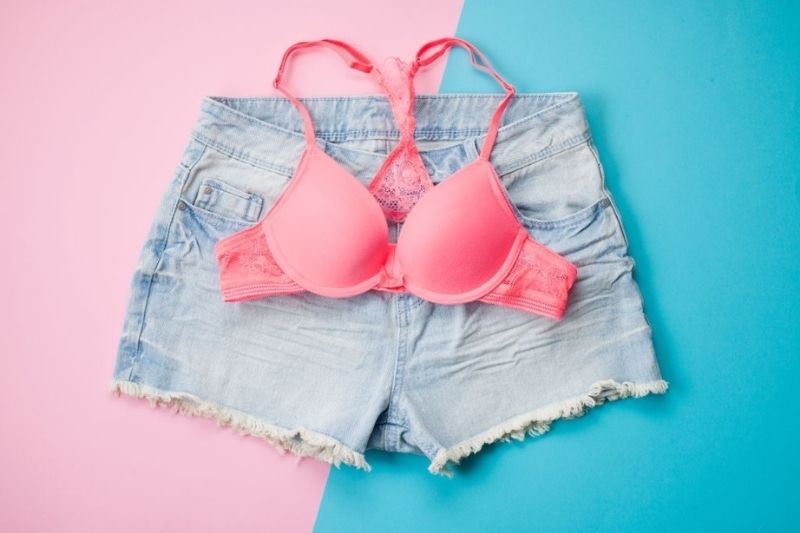There is a new, brand new trend among children’s clothes. A way of dressing “agender” that eliminates the male-female stereotype
It is difficult to understand if it is a trend, a business or a step forward. The fact is that fashion is experiencing a change of perspective. From the fur coat we went to animal free, with clothes and accessories without animal products. From the shocking pink polyester leggings, we are moving towards eco-green, with wearable garments and fabrics that are attentive to the environment and the working conditions of the producers, natural dyes, waste reduction and with an eye on recycling and reuse.
New, very new is the “Agender” trend, the abolition of sexist stereotypes in the clothes of adults and children. With many variations: no gender, genderless, gender free, gender neutral or genderfluid, it is a way of dressing that redeems a new way of thinking in fashion.
From Selfridges to Zara, passing through H&M

The initiative of the British department store chain Selfridges, which in 2015 launched the Agender campaign, had caused quite a stir, allocating (unfortunately for only two months) two floors of the London store to collections for him and her.
The project wanted to create “a shopping experience without distinction of gender, through fashion, accessories and beauty”. Quite simply, customers were asked to choose garments based on color, shape and style preferences.
Shortly thereafter, other brands also followed suit. In 2016 Zara launched the Ungendered collection, featuring gender-neutral clothing for boys and girls. The following year H&M released Denim United, casual garments designed for everyone and made of organic and recycled material.
And if “fast fashion” does not satisfy you, high fashion has arrived too. The last seasons of Gucci, through the designer Alessandro Michele, have strongly launched the idea of a gender free fashion. With the following of other luxury brands: Eckhaus Latta, Vaquera, Art School London and Telfar.
The new fashion made of genderless silhouettes has also given birth to new brands. No Sex, Official Rebrand and Rebirth Garment promote accessibility and intersection. Then there are emerging, more radical and extreme retailers, such as Radimo and The Phluid Project, who see the apparel market as a means to question gender norms. In the end, the staff are political and take a stand even with clothes.
And if you’re looking for the best way to get coupons, the easiest thing to do is to search for them on thecelebfashion. You’ll be sure to find relevant ones that will help you save a ton.
Girls and boys, a single convenience

It is very difficult for parents to get out of the pink-blue binomial. In shopping malls it’s all a line of pink against shelves of fifty shades of blue for boys. Princesses versus pirates. Dancers versus astronauts. However, there is some news.
In 2017 John Lewis, owner of the homonymous department store chain with over forty outlets in Britain, agreed to the activities of the group “Let Be Clothes Clothes” and decided to ban labels gender. His clothes now stand out in “Boys & Girls” and “Girls & Boys”.
A provocation also comes from Free to be kids, a brand that offers neutral clothing for early childhood, with non-stereotyped color playsuits, t-shirts and dresses with graceful lines and messages related to gender equality.
The online boutique Sewing Circus had great success (abroad), one of the lines of anti-histereotype children’s clothes, born from a mother exasperated by the rigidity of the market. Today it produces T-shirts, caps, trousers and skirts for children and adults with very pretty and atypical patterns.
More or less similar are Budding Stem, a line of t-shirts and leggings dedicated to astronauts (with frogs and bees) and Princess Awesome’s “princesses not in pink” with tank tops based on dragons, dinosaurs and sharks, bright colors and even some gray and black cape.
Another newcomer to the market, Claude & Co was created by Abi Dakin, a former buyer of children’s clothing for Next, in 2017. Abi saw the gap in the market for non-gender-specific clothing and accessories for toddlers and aimed to fill it. We love the earthy colors, timeless styles, and fun details that have made the brand quickly become one of our favorite unisex clothing brands.
Finally, there are Climbing Trees for girls who love robots, dinosaurs and pirates and Handsome in pink for boys who love pink or purple (with drawings of tools or firemen) and hair tweezers (with crocodiles).
The genderless collection launched by Céline Dion for NUNUNU is very fresh, for which she has created over 70 pieces for children 0-14 years. She wanted to encourage dialogue, equality and other possibilities. The idea was born after a visit to the maternity ward of a hospital, where everything seemed strictly divided into blue and pink.
Non-compliant choices, which have an added advantage: it does not matter what gender the second child, the cousin or the friend is: the clothes can be reused over time. In short, you just have to indulge yourself. And in total freedom.
How to choose the right clothes for your child?

Buying children’s clothes can very easily become a puzzle: size, price, materials, you get lost quickly! Discover our tips for finding the perfect children’s clothing brands. Don’t forget to search for the best coupons for kids clothing on thecelebfashion.
Choose a brand whose universe speaks to you
If the brand’s designers have a fashion vision that appeals to you or values that resemble yours, you should be making the right choice. Look at the colors, the cuts, the materials, etc. to build your child’s future look.
Select a brand of children’s clothing according to your budget
When it comes to fashion, everyone has their own budget. There are children’s clothing brands at all prices, for a more or less equivalent quality. For low prices, we think of Cucumber for example, for intermediate prices there is Zara, H&M or Mothercare. Marks&Spencer, Nautica, GAP or Armani are more positioned at the top of the range.
Choose clothes according to your child’s age and size
Finding the right size clothes can be tricky. Accordingly, we advise you to refer to the size guide. Indeed, even if it is indicated that a certain size corresponds to an age on a garment, the reality is sometimes different. Remember to take your child’s measurements regularly to avoid unpleasant surprises.
Favor the ergonomics and comfort of clothing
Clothing should allow your child to move easily. They should feel comfortable wearing them. So, choose comfortable clothes with quick fastening systems, neither too big, nor too tight for more comfort. For shoes, opt for models that adapt to your little one’s feet to avoid discomfort and deformities. Regarding accessories, avoid them as much as possible! They will not be of much use for your child and you will run the risk of them breaking in the middle of a toboggan run. Also prefer pants with elastics and avoid rigid belts. For the models, choose for example zipped combinations and scratch tennis shoes to gain practicality. For the bottom, opt for pants, leggings, harem pants that will bring freedom of movement and comfort to your little one.
Choose soft and comfortable materials
Ban the materials that will block perspiration including leather, tulle, etc. Prefer cotton and avoid those that scratch and lack flexibility.
Adapt your purchases to the seasons
To avoid overheating in summer and colds in winter, choose suitable clothing. In summer, opt for short-sleeved t-shirts, Bermuda shorts and light little dresses so that your child does not sweat too much. For shoes, take sandals or open shoes to let the feet breathe. In winter, think about sweaters and cardigans that will keep your child warm. For example, you will find hooded sweatshirts and pants sets that will bring warmth and comfort to the little ones. Pair the big coat with closed-toe shoes and your child will be ready to venture out into the cold. To avoid exceeding the budget, buy during the sales the clothes that your children will wear in a year, taking into account their growth.
Choose an ethical and ecological children’s clothing brand
The damage caused by fast-fashion is visible and it is increasingly easy to orient your choices of children’s clothing brands according to their respect for the environment and their approaches to social responsibility. To find your way around, certain labels allow you to sort: Oeko-Tex (clothing without toxic substances) and GOTS (organic products and respecting good manufacturing conditions) in particular. Choose materials such as lyocell / tencel (transformation requiring little water), organic cotton (less water), linen, wool or hemp. Finally, if you are attentive to the origin of the raw materials and the places of manufacture, choose a 100% Indian and local brand like Chicco, Cucumber, Hopscotch, etc.

